
These homeshoes were purchased in Japan in 1995 at the port of Toyama. Houses have no heating, so women wear these slippers to keep their feet warm. A gift to our […]

These homeshoes were purchased in Japan in 1995 at the port of Toyama. Houses have no heating, so women wear these slippers to keep their feet warm. A gift to our […]

Muhu sussid. (Leather, fabric, embroidery). Estonia. Valmistatud muhu saarel.

Libanease sandals. Leather. Embroidery.

Aimsy, Abkhazian boots. Leather. Upper leather or felt stockings. http://afon-abkhazia.ru/developments/1472/

Northern Cyprus.
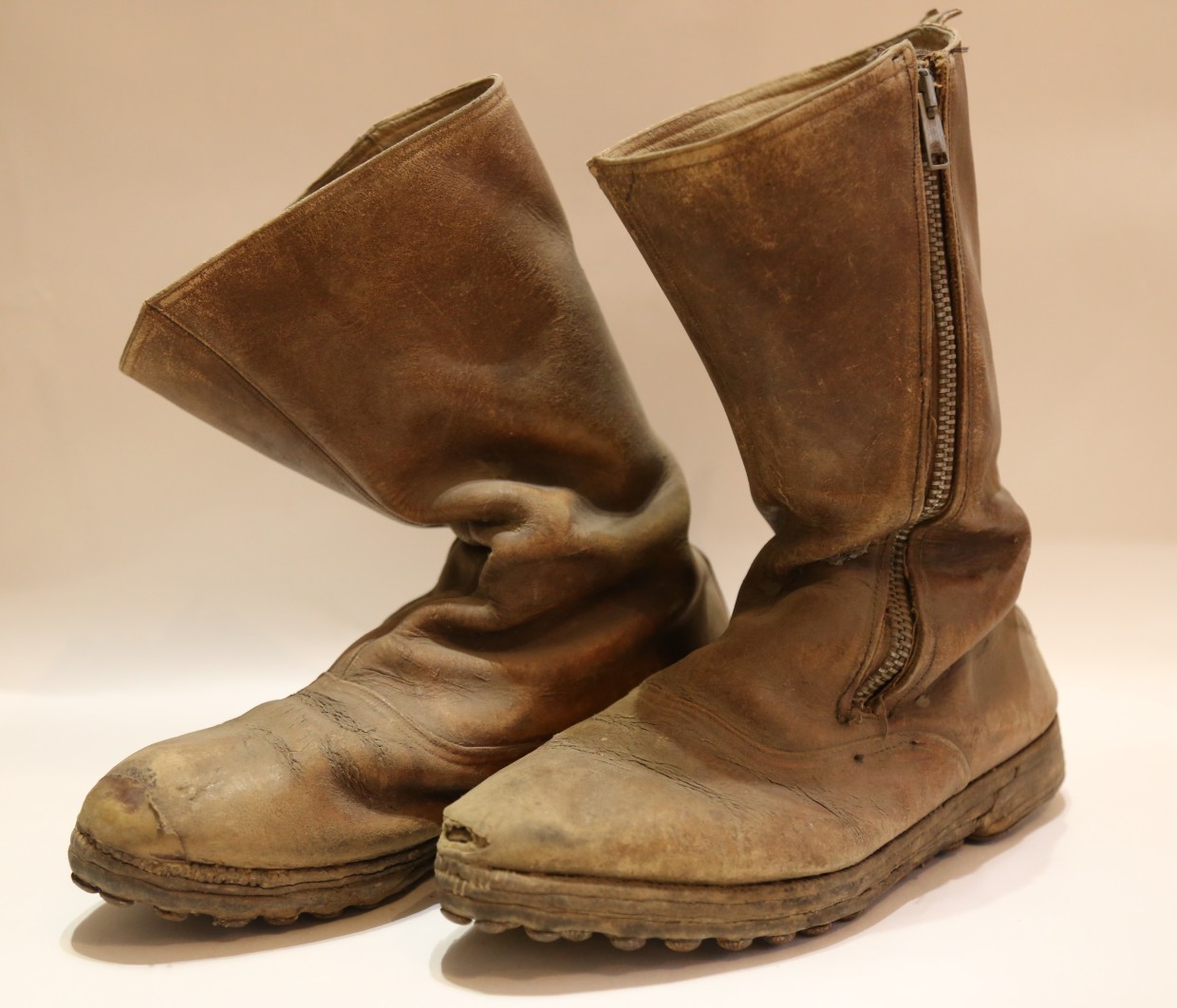
Leather boots with metal pins. Tsagaris skarparis. 1930-40.

leather, handmade

bright pair, fabric

Galician type of footwear is made generally of a piece of wood. Were used and are still used to rurral areas in the north of Spain (Galicia, Asturias, Catabria and […]

On feet people are still wearing woolen stockings to the knee, differing in the areas of color and embroidery, and on top of them – woolen socks beautiful knitted and […]

Punjabi Jutta – leather shoes, popular in Punjabi, stitched by hand. Punjabi Jutta worn by both men and women, the shape of shoes for women is slightly different, but in […]
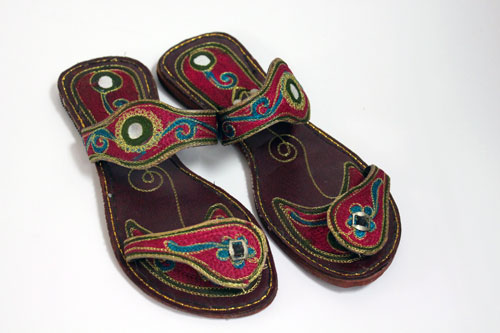
Punjabi Jutta – leather shoes, popular in Punjabi, stitched by hand. Punjabi Jutta worn by both men and women, the shape of shoes for women is slightly different, but in […]

Slippers for women with ornament and embroidery.
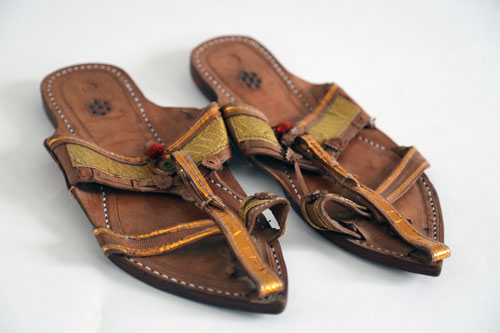
Kolhapur, a town in the state of Maharashtra, famous for its leather sandals from the XIV century. Today kolhapur chappal design is found throughout India, and their name is used […]

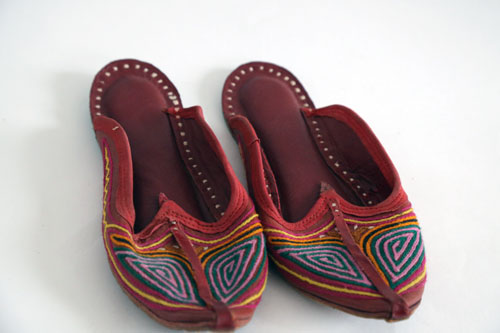
Punjabi Jutta – leather shoes, popular in Punjabi, stitched by hand. Punjabi Jutta worn by both men and women, the shape of shoes for women is slightly different, but in […]

Patria o muerte – Viva Cuba libre!

Patria o muerte – Viva Cuba libre!



Sorry, this entry is only available in Russian.

Namibia’s largest shoe factory is specialized in the manufacture of traditional shoes – soft, light, but surprisingly well holding moisture and does not allow the bites of insects and animals.

Klomp (clogs) – wooden shoes, which are made of willow and poplar, willow does not pass water. Klomps are warmer and drier than rubber boots. Clogs – wooden shoes, which […]

Found in the Swiss Alps and the shepherds use them even today.

Since their introduction in 1962, Havaianas have joined the symbols of Brazilian football and samba. In Brazil, literally everyone wears Havaianas – now a world-famous brand of rubber and plastic […]

Pakistan and pushtun shoes, Afghan women’s shoes with flat soles and curved toe, sometimes embroidered.

Pakistan and pushtun shoes, Afghan women’s shoes with flat soles and curved toe, sometimes embroidered.

Pakistan and pushtun shoes, Afghan women’s shoes with flat soles and curved toe, sometimes embroidered.

Pakistan and pushtun shoes, Afghan women’s shoes with flat soles and curved toe, sometimes embroidered.

From Swat, Pakistan – beautiful wooden shoes with carved patterns, Darden, living area Torwali – Bahrain.

Saplai or Chapals, are in the province of Khaber in Afghanistan, the Pashtun people. It is believed that come from Peshawar. Made of goat skin by special order for the […]

Witso (Vaigai “Kalash-ala” Nuristani languages) kalon (“Kalash-mun,” Dard) In the past, it has been distributed to Nuristan and Dardic peoples along the current Afghan-Pakistani border. In other words – the […]

The western part of the island is famous for its artisans who manufacture hand very comfortable shoes, such as traditional Cretan boots Stivania. Footwear made in Crete.

Warm shoes are exclusively made for any weather. They are made of reindeer paws (kamus) and filed a thick felt. Lining made of natural cloth, bile – a beadwork.

Leather, hand made boots. 20 th century, Turkey.

Slippers for women with ornament and embroidery.

Khussa – handmade footwear from North India and other South Asian countries. Local manufacturing khussa art, which is more than 5,000 years, is gradually fading. Masters, who are engaged in […]

Sandals worn by both men and women. Hand-made embroidery, soles made from natural materials.

Simple Vietnamese shoes are not worn on holidays , but sandals made of bamboo are. Noble residents of the capital city of Hue wore these shoes, commoners were prohibited from […]

China has diverse customs and styles as regards its traditional dress culture, and the abundance and variety of Chinese footwear justifies its being singled out from other items of apparel […]

These beautiful soft slippers with genuine leather soles are decorated in a traditional style with floral pattern of Krakow.
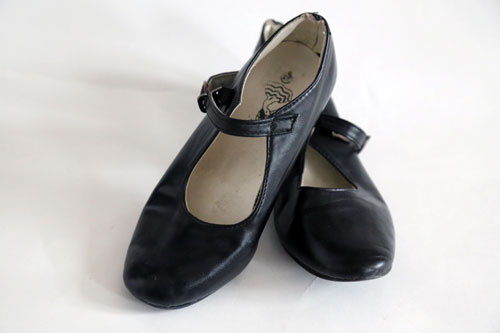
Andalucia. Flamenco shoes – closed toe and heel, on a stable heel with a strap that secures the ankle. The emergence of flamenco shoes is directly connected with musical and dance […]

Menorca. Menorquinas – is the traditional footwear of local residents, mostly farmers. This leather sandals on a very thin and flat shoes. They are in our days sew by hand.


Tsarouhi (Greece, Metsovo)
Domestic knitted slippers. In some places there are leather shoes with high soles, backless – kөvүsh and red boots on high heels – әdik. Currently shoes are worn on festive […]
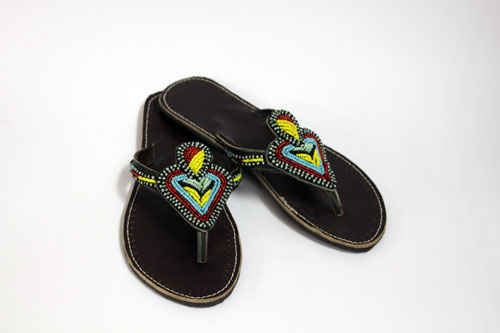
Definition: a shoe with a bottom part that is held in place with straps around the foot and sometimes the ankle Origin of sandal: Middle English, from Anglo-French, from Latin sandalium, […]

It is the name of India’s oldest, most quintessential ceremonial footwear. It is little more than a sole with a post and knob, which is engaged between the big and […]

Handmade wedding cloth shoes. Yao (JSC) (Chinese 瑶族, Pinyin: Yáo zú, Vietnam. Người Dao) – a group of people living in the territory of China (Guangdong, Hunan and Guangxi Zhuang […]

Serbian traditional shoes with a slightly upturned noses made exclusively homemade from skin. Serbia, 20th cent.
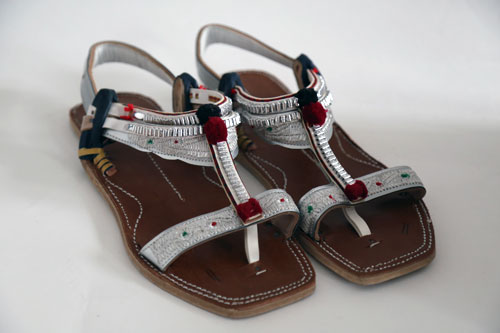
Indian leather sandals. Handmade shoes, made of buffalo’s tight skin. Embroidery, inlaid mirrors. India, 20th cent.

Light leather boots with soft leather soles. Kyrgyzstan, 20th cent.

Leather and wood. Leather sanadals protecting feet from hot sand. United Arab Emirates, Dubai, 19th cent.

Soles of Mojari are made of treated skin of buffalo, cow and/or camel, also with leather or textile upper part. Although Modjari traditionally are worn in Rajasthan, some varieties can […]

Soft leather boots.

Wood and leather. 21st cent. Nazarre, Portugal.

Wool, felted , embroidery. Home shoes. 21.st. cent. Poland.

These are hand made of brown leather and are gathered around foot. They are tied to the feet with a long narrow strip. The traditional peasant sandals are worn by […]

Traditional Latvian hard leather shoes. The shoes were worn by male and female.
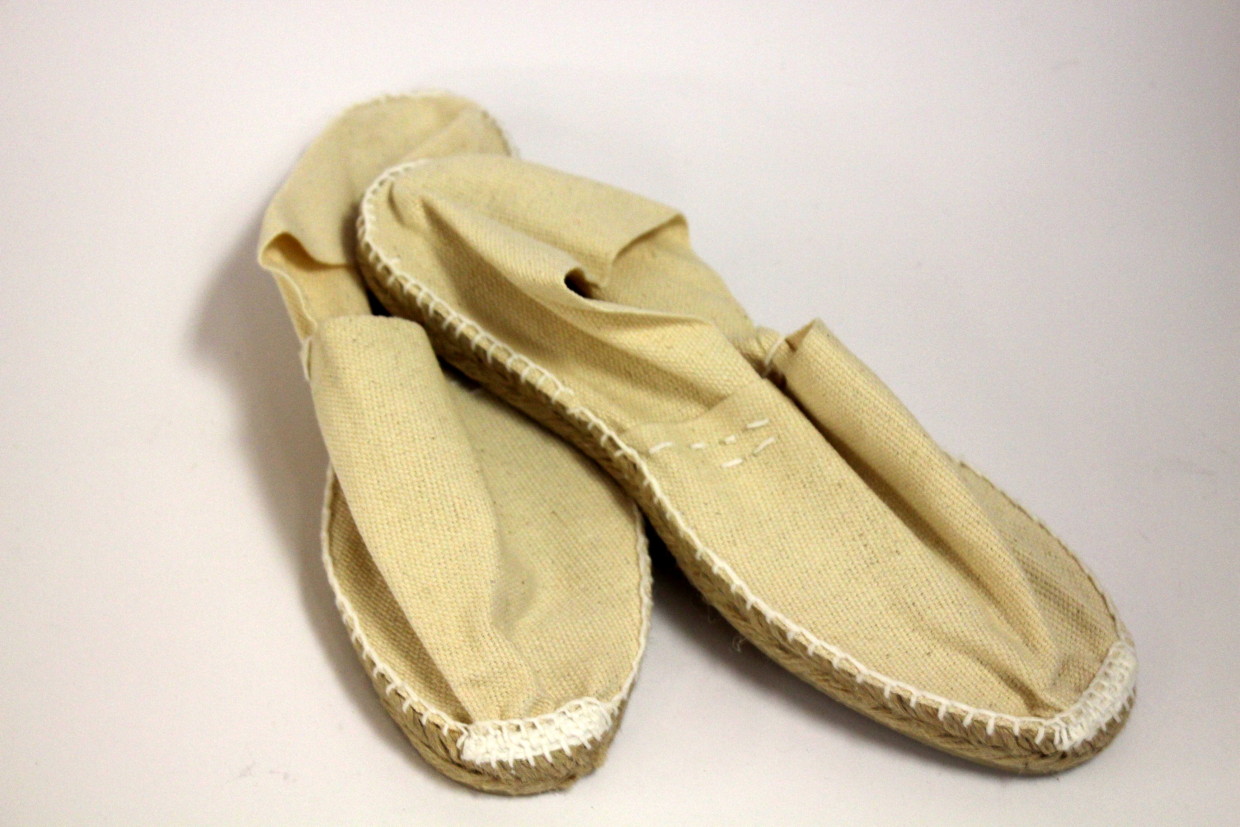
Spanish traditional summer shoes. Fabric, rope-soled shoes made of natural materials. Spain, 20th cen

Traditional leather shoes with pompons are a part of the Greek national costume. Male pompoms were painted in black, for women and children they bear bright colours.

Traditional hard leather boots. Worn by the Highlanders and are widely used in the Carpathians and the Balkans. Poland, 20th cent.

Pimy are worn by various semi-nomadic pastoralists in the Northern Russian regions, they are made of deer’s fur and leather. Nenets.

Chuviaks (Russia, Ossetia). Previously, this type of footwear was worn by bosth men and women of the poeples of the Caucasus and Minor Asia. Made from buffalo skin, bulls and […]

Car tyre rubber sandal, South Africa.

Soft leather shoes without backs, usually embossed with morocco (maroquin). National footwear in Morocco, common in other countries of north-west Africa.

Leather.

Leather and embroidery. 21st cent.
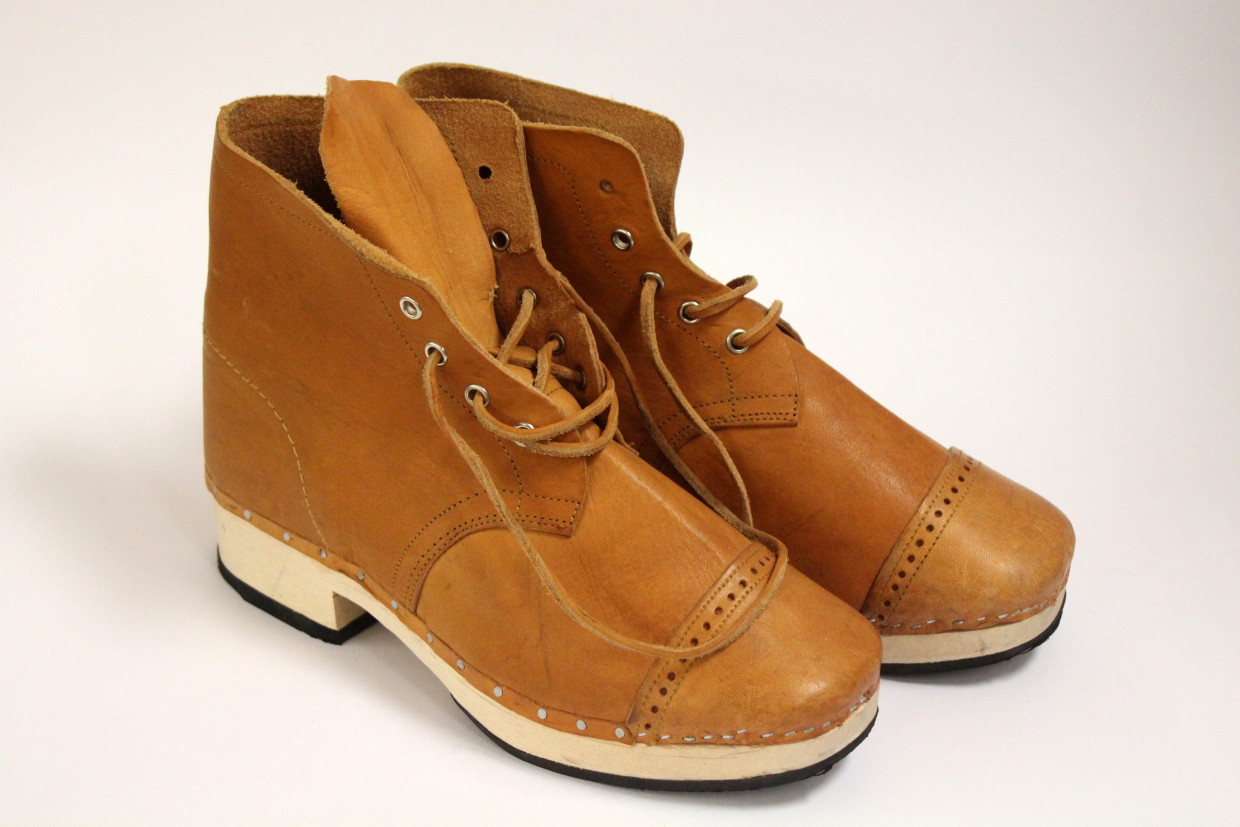
Traditional galician shoes. Northern Spain. Leather and wood. It is used both for work in the field and for dancing.
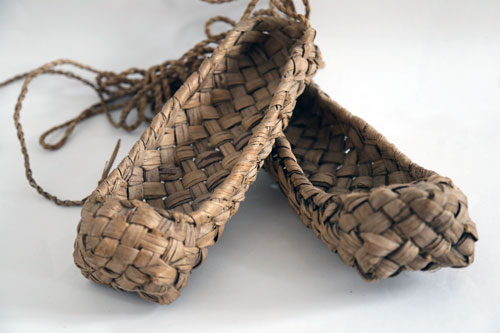
Lapti are the traditional bast shoes of the Russian peasants. The word lapti apparently originated from the word “lapa”, which meant “foot” in old times, and now means paw. Until […]

Valenki. Traditional Russian winter footwear.